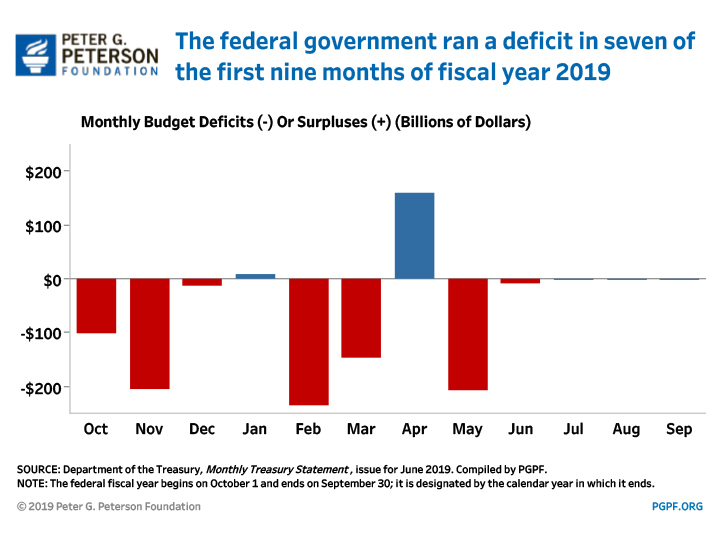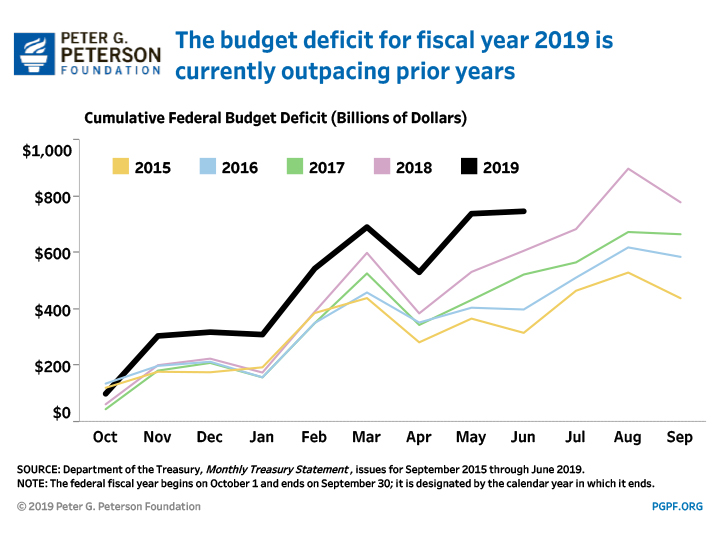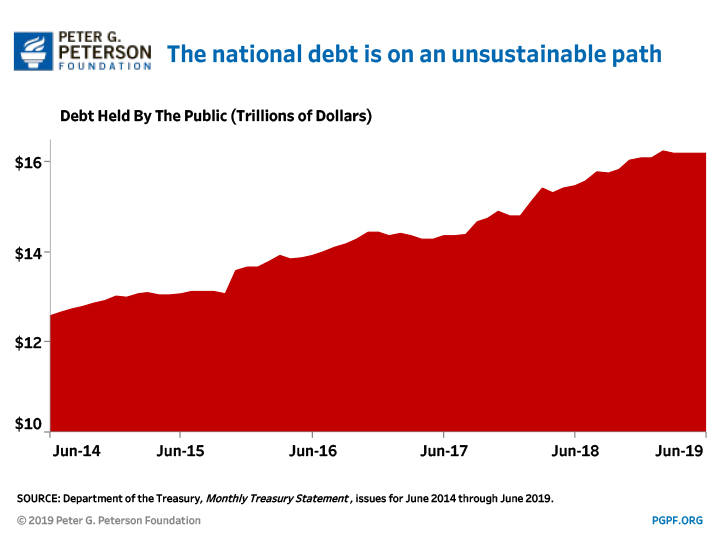You are here
Federal Deficit and Debt: June 2019
Every month the U.S. Treasury releases data on the federal budget, including the current deficit. The following contains budget data for June 2019, which was the ninth month of fiscal year 2019.
Current Federal Deficit

- Federal Budget Deficit for June 2019: $8 billion
- Federal Budget Deficit for June 2018: $75 billion
The deficit for June 2019 was $66 billion smaller than recorded in June 2018. However, shifts in the timing of certain federal payments decreased outlays in June 2019 and increased outlays in June 2018. Without those shifts, the June 2019 deficit would have been $28 billion larger than it was a year ago.
Cumulative Federal Deficit

- Cumulative FY19 Deficit through June 2019: $747 billion
- Cumulative Budget Deficit over Same Period in FY18: $607 billion
The cumulative deficit through the first nine months of FY19 was $140 billion larger than it was through the first nine months of FY18. That reflects a $208 billion increase in outlays, partially offset by a $68 billion increase in receipts.
National Debt

- Debt Held by the Public through June 2019: $16.2 trillion
- Debt Held by the Public through June 2018: $15.5 trillion
While the deficit varies from month-to-month, and may even decline some months — for example, in April when taxpayers are submitting their personal income taxes — debt and deficits are on an unsustainable upward trajectory. The CBO projects that national debt could rise to about 140 percent of gross domestic product by 2049. That level of debt would far exceed the 50-year historical average of approximately 40% of GDP.
Why are such high levels of debt so concerning? There are many reasons that Americans should be concerned about the rising national debt — particularly if you are concerned about economic growth, investments in our nation’s future, and preservation of our social safety net.
